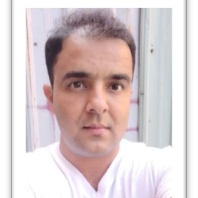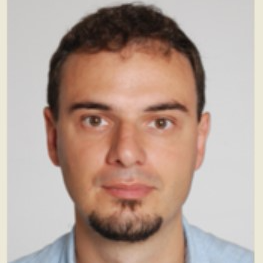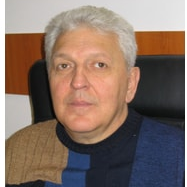Additive Manufacturing: Experiments, Simulations and Data-Driven Modelling
A special issue of Crystals (ISSN 2073-4352). This special issue belongs to the section "Crystalline Metals and Alloys".
Deadline for manuscript submissions: closed (20 March 2024) | Viewed by 14239
Special Issue Editors
Interests: additive manufacturing; laser-material interaction; tribology; process automation, modelling
Special Issues, Collections and Topics in MDPI journals
Interests: additive manufacturing; laser-material interaction; laser powder bed fusion; laser metal deposition; process development; binder jetting technology; process modelling; modelling
Interests: sustainable and smart manufacturing; materials for energy applications; materials processing; integration of mechanics and materials in manufacturing
2. Additive manufacturing technologies research and application center-EKTAM, Gazi University, Ankara 06560, Turkey
3. Manufacturing Technologies Center of Excellence-URTEMM A.S., Ankara 06980, Turkey
Interests: non-traditional manufacturing methods; machine; theory and dynamics; machine dynamics; system dynamics and control; mechatronics; modelling and simulation of dynamic systems; mechanical vibrations
Interests: organic/inorganic membranes applications; surface modification of nanoparticles; bioconversion
Interests: developing mechanical and energy technologies for various applications
Special Issues, Collections and Topics in MDPI journals
Interests: experimental optics; spectroscopy; lasers and plasma; surface studies and processing with lasers; laser interactions; lasers and plasma physics; nanostructured thin-film technology (PLD, MAPLE, and combinatorial); surface physics and engineering; biophysics and biomedicine; nano-biotechnologies; gas- and biosensors; plasma and laser theory
Special Issues, Collections and Topics in MDPI journals
Interests: additive manufacturing; laser metal processing; biocompatible materials; surface microstructuring; deposition and modification of thin solid structures via high intensity laser irradiation
Special Issues, Collections and Topics in MDPI journals
Interests: laser processing; nuclear physics and relativity
Special Issues, Collections and Topics in MDPI journals
Interests: pulsed laser deposition; modification and characterization of nanostructured thin coatings; matrix-assisted pulsed laser evaporation (MAPLE); laser surface studies and processing; biomaterials thin layers; tissue engineering; biomimetic metallic implants; optoelectronics and sensors
Special Issues, Collections and Topics in MDPI journals
Special Issue Information
Dear Colleagues,
Additive manufacturing (AM) utilizes a layer-upon-layer technique to produce three-dimensional (3D) components via a computer-aided design (CAD) model, promising manufacturing advantages compared to conventional approaches, such as manufacturing intricate geometries, controlling the heat-affected zone and removing numerous technological steps; thus, reducing the final manufacturing cost. AM has been explored in automotive, biomedical, aerospace and industrial applications based on the facts mentioned above, and has been widely applied to various materials, including metals, ceramics, polymers and ceramic-reinforced metal matrix composites (CMMCs), a mixture of metals and ceramics. In AM, operating conditions influence the properties of the manufactured parts and the in-service life. One way to determine the optimum operating conditions is to conduct a series of experiments by utilizing the trial-and-error method, increasing the manufacturing direct and indirect costs. On the other hand, this can be performed by using an experimentally validated simulation model linked with data-driven models (machine learning), leading towards smart manufacturing.
The primary purpose of this Special Issue of Crystals, titled “Additive Manufacturing: Experiments, Simulations and Data-driven Modelling”, is to deliver an intercontinental forum for ground-breaking research on the process parameters optimization, development of new alloys and compounds, ceramics and CMMCs for AM experiments, sophisticated simulation model development and the implementation of machine learning in AM processes.
Dr. Muhammad Arif Mahmood
Dr. Asif Ur Rehman
Prof. Dr. Marwan Khraisheh
Prof. Dr. Metin U. Salamci
Dr. Rashid Ur Rehman
Prof. Dr. Uzair Sajjad
Dr. Carmen Ristoscu
Dr. Andrei C. Popescu
Dr. Mihai Oane
Prof. Dr. Ion N. Mihailescu
Guest Editors
Manuscript Submission Information
Manuscripts should be submitted online at www.mdpi.com by registering and logging in to this website. Once you are registered, click here to go to the submission form. Manuscripts can be submitted until the deadline. All submissions that pass pre-check are peer-reviewed. Accepted papers will be published continuously in the journal (as soon as accepted) and will be listed together on the special issue website. Research articles, review articles as well as short communications are invited. For planned papers, a title and short abstract (about 100 words) can be sent to the Editorial Office for announcement on this website.
Submitted manuscripts should not have been published previously, nor be under consideration for publication elsewhere (except conference proceedings papers). All manuscripts are thoroughly refereed through a single-blind peer-review process. A guide for authors and other relevant information for submission of manuscripts is available on the Instructions for Authors page. Crystals is an international peer-reviewed open access monthly journal published by MDPI.
Please visit the Instructions for Authors page before submitting a manuscript. The Article Processing Charge (APC) for publication in this open access journal is 2600 CHF (Swiss Francs). Submitted papers should be well formatted and use good English. Authors may use MDPI's English editing service prior to publication or during author revisions.
Keywords
- additive manufacturing
- metals
- ceramics
- ceramic-reinforced metal matrix composites
- experiments
- simulations
- machine learning
- process parameters optimization
- smartification of additive manufacturing














